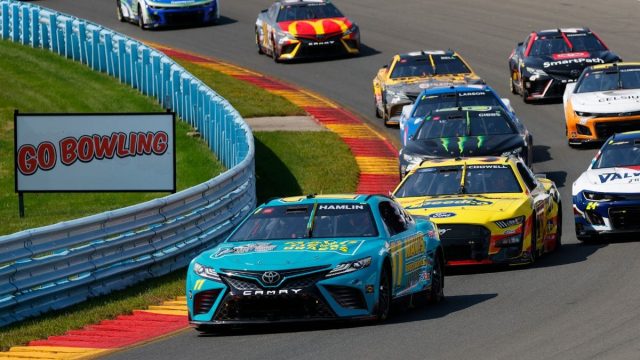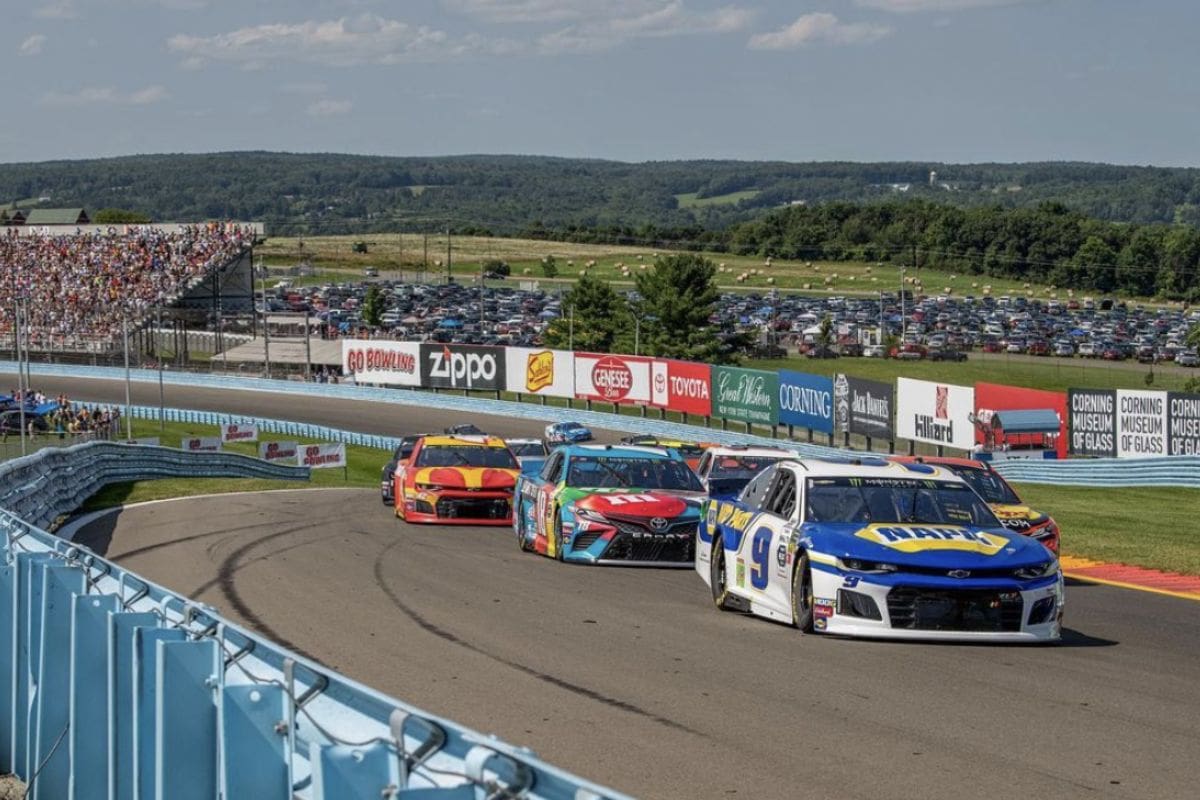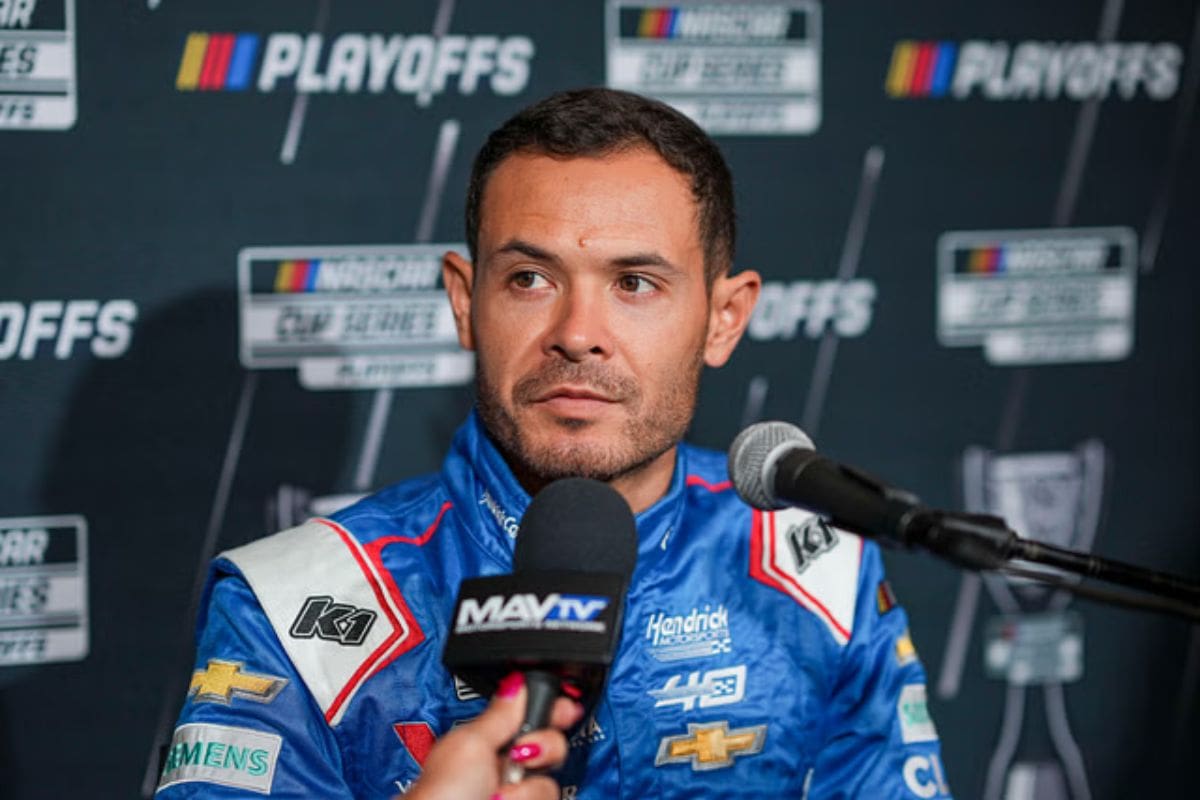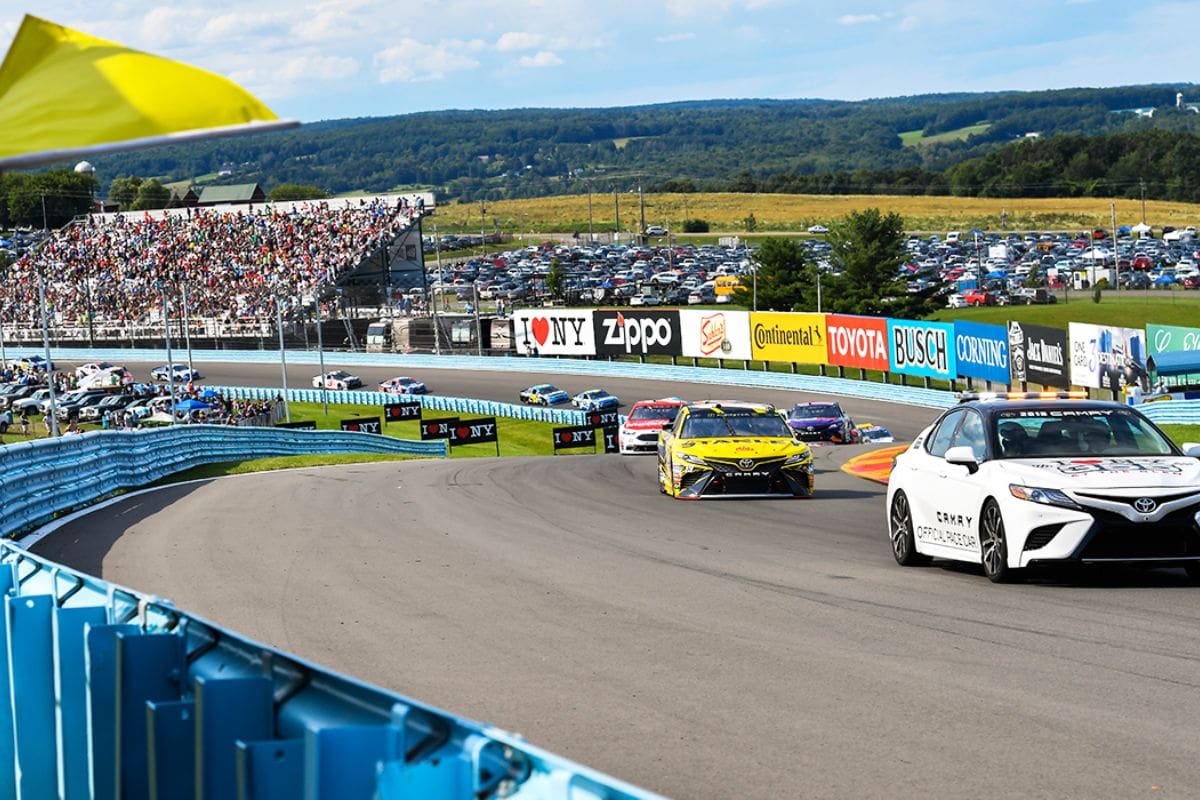Kyle Larson Uncovers Watkins Glen’s Hidden Danger: The recent track improvements at Watkins Glen, catalyzed by Kyle Larson‘s sophisticated analysis, mark a notable evolution in NASCAR’s approach to driver safety and performance. As concerns about the extreme forces exerted on drivers became increasingly prominent, Larson’s insights prompted vital modifications, including the removal of outdated curbs and the inclusion of safer rumble strips. This proactive response not only aligns with the introduction of Next Gen cars but also raises questions about the influence of data-driven decision-making in motorsport.
Key Highlights
- Kyle Larson’s data revealed dangerous forces on drivers, prompting NASCAR to reassess track safety at Watkins Glen.
- Modifications included removing old raised curbs and installing flatter rumble strips for smoother navigation.
- Enhancements like extended Armco barriers and one-inch rumbles improved driver spatial awareness and safety.
- The introduction of Next Gen cars necessitated adjustments to curbing for better vehicle performance and driver protection.
- Larson’s advocacy emphasized the importance of data in driving safety improvements and fostering collaboration between drivers and NASCAR officials.
Watkins Glen Track Issues and Driver Complaints
In recent years, the Watkins Glen road course has garnered considerable attention not only for its storied history but also for emerging safety concerns raised by drivers. The complexity and uniqueness of the track have long posed challenges, yet recent complaints have intensified examination regarding its condition.
Significantly, several drivers reported experiencing intense headaches attributed to the old curbs, which have been deemed a hazardous aspect of the circuit. Kyle Larson‘s situation exemplifies these concerns; data gathered from his mouthpiece highlighted the physical toll that a particularly dangerous section of the track exacted on drivers. This revelation prompted a broader dialogue about track safety and the implications for driver well-being.
The curbs at Watkins Glen, which once served as characteristic features of the road course, are now seen as potential liabilities that could compromise performance and safety. The complaints have ignited a movement within the NASCAR community to reassess the infrastructure of the track.
Safety must be in a sport where speed and precision dominate. Addressing these issues is not just about enhancing the driving experience; it is also about protecting the athletes who navigate these challenging circuits. As NASCAR continues to adapt to evolving safety standards, the experiences and feedback from drivers like Larson will be essential in informing necessary modifications at Watkins Glen, ensuring that it remains a revered venue without sacrificing safety.
Impact of Next Gen Cars and NASCAR’s Response
The introduction of Next Gen cars has considerably altered the dynamics of racing at Watkins Glen, highlighting both the advancements in vehicle technology and the accompanying challenges related to track safety. The rigid design of these cars necessitated immediate modifications to the track, particularly concerning the curbing, which had become an obstacle rather than an aid for drivers.
NASCAR’s proactive response to these challenges emphasizes the organization’s commitment to ensuring driver safety while maintaining competitive integrity.
The following changes were implemented to accommodate the unique characteristics of Next Gen cars:
- Curbs Replacement: The curbing before the initial playoff race at Watkins Glen was replaced to better accommodate the rigid chassis of Next Gen cars, which do not absorb shocks as effectively as their predecessors.
- Safety Improvements: The updates aim to reduce the risk of damage to the vehicles, thereby protecting both drivers and the integrity of the race itself.
- Driver Feedback Integration: NASCAR has actively sought input from drivers, demonstrating an understanding that their experiences are crucial in shaping effective safety measures.
- Ongoing Evaluation: The organization remains committed to continuously evaluating the performance of Next Gen cars in conjunction with track conditions, ensuring that improvements are both timely and relevant.
These adjustments represent a significant evolution in NASCAR’s approach to safety and competition, affirming the importance of adapting to technological advancements while prioritizing the well-being of drivers on the track.
Kyle Larson’s Role in Track Improvements
Kyle Larson has emerged as a crucial figure in advocating for track improvements at Watkins Glen, particularly in response to health concerns raised by drivers. The advent of mouthpiece sensors has provided essential data, revealing alarming insights into the physical toll of racing on competitors. Following reports from drivers about considerable discomfort and health risks, NASCAR was prompted to scrutinize the data collected.
“It looks a lot smoother, looks faster probably getting into it.”
“It did sound like there were a lot of guys who had reached out after and said their heads hurt. So, yeah I think it was a collaborative effort amongst all the drivers and thankfully NASCAR was receptive to it.”-(KYLE LARSON)
Kyle Larson’s mouthpiece data helped convince NASCAR that it had to do something at the bus stop at Watkins Glen. His thoughts: pic.twitter.com/7fKOY2GHJe
— Bob Pockrass (@bobpockrass) September 14, 2024
The findings were striking: drivers were subjected to forces of up to 18Gs at critical points on the track, specifically during the bus stop maneuver. Such extreme forces not only caused immediate headaches during races but also persisted through practice sessions and qualifying rounds. This information highlighted the pressing need for intervention. Larson, among others, recognized the necessity of addressing these concerns to safeguard the well-being of drivers.
NASCAR’s swift response to this data was a confirmation of its commitment to driver safety. The adjustments made to the Watkins Glen layout ahead of the crucial playoff race were partly influenced by Larson’s vocal advocacy. His gratitude expressed post-implementation emphasizes the collaborative effort between drivers and the governing body to improve the racing environment.
Larson’s role transcends mere participation; he has become a conduit for change, ensuring that the voices of his peers resonate within the corridors of NASCAR decision-making. This proactive approach not only fosters a safer racing experience but also reinforces the importance of data-driven analysis in the evolution of motorsport safety protocols.
Track Changes and Potential Impact on Racing
Safety and performance improvement are paramount as NASCAR implements considerable changes to the Watkins Glen track layout. The recent modifications, driven by driver feedback, particularly from Kyle Larson, aim to improve the racing experience while prioritizing safety.
Key adjustments include:
- Removal of Raised Strips: The previous raised strips have been replaced with flatter rumble strips, effectively reducing the violent turns that drivers faced. This change is expected to facilitate smoother navigation through challenging sections of the track.
- Extension of Armco Barriers: The bus stop area has seen the paving extended to accommodate newly relocated Armco barriers. This not only improves safety by providing a buffer zone but also encourages more aggressive driving lines.
- Installation of Interchangeable Rumble Strips: By incorporating interchangeable rumble strips, NASCAR allows teams to adapt to varying track conditions, thereby promoting tactical versatility during races.
- Introduction of One-Inch Rumbles: These newly installed rumble strips next to the barriers serve as a tactile guide for drivers, improving their spatial awareness and potentially reducing mishaps during high-speed maneuvers.
The combination of these changes is poised to impact the quality of racing on the 2.45-mile road course considerably.
While it remains to be seen how these modifications will play out in the playoffs, the proactive approach taken by NASCAR demonstrates a commitment to aligning safety with competitive integrity, setting the stage for a thrilling race environment.
Aric Almirola’s Insights on Watkins Glen’s Challenges
In consideration of recent changes at Watkins Glen, Aric Almirola provides a compelling perspective on the track’s historical challenges and their impact on drivers. Almirola, a semi-retired driver with extensive experience, articulates the physical toll the old configuration imposed, particularly on drivers piloting the rigid Cup Series cars. Notes that the intense headaches reported by many racers stemmed from the violent nature of these vehicles when maneuvering the track’s curbs.
Almirola clarifies the critical difference between the Cup and Xfinity Series cars, emphasizing that the latter’s more forgiving suspension design mitigates the brutality of the driving experience. He states, “The Cup cars are so rigid and they run them so stiff and they bottom out on the shock limiters.” This rigidity creates a jarring experience when drivers engage with the curbing, leading to a physically taxing race.
“It hurt. Mostly with the Cup car, the Xfinity cars run a little bit more on standard suspension so it’s not as violent because the car is a little bit more forgiving the car, there’s a lot more body movement in the Xfinity car so it absorbs the high velocity of the curbs better. But the Cup cars are so rigid and they run them so stiff and they bottom out on the shock limiters. So, when you hit those curbs in the Cup car, it was just violent.”-(BOB POCKRASS)
The implications are clear: the demands of the Cup car at Watkins Glen not only affect performance but also driver well-being.
His insights demonstrate the necessity for the recent track improvements, as they aim to create a safer and more manageable environment for competitors. By addressing these inherent challenges, NASCAR is not merely enhancing the racing spectacle but also prioritizing driver health and safety.
Almirola’s reflections underscore the importance of continuous evolution in track design and vehicle engineering to meet the rigorous demands of elite motorsport.
News in Brief: Kyle Larson Uncovers Watkins Glen’s Hidden Danger
The track improvements at Watkins Glen, driven by data analysis and collaboration between Kyle Larson and NASCAR officials, represent a notable advancement in race safety. By addressing the intense forces experienced by drivers through the removal of outdated curbs and the installation of safer rumble strips, these modifications improve general driver well-being. This proactive approach not only aligns with the Next Gen cars’ introduction but also sets a precedent for continuous safety improvements in motorsports.
ALSO READ: Watkins Glen Headache Mystery Solved: The Real Culprit Behind NASCAR Drivers’ Discomfort



